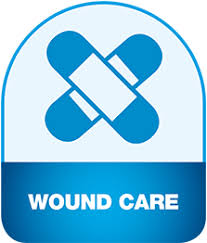
Anna Polak
Academy of Physical Education
Title: Periwound skin blood flow and reduction of pressure ulcer size after anodal and cathodal high-voltage monophasic pulsed current. A preliminary report from a randomized clinical trial
Biography
Biography: Anna Polak
Abstract
Introduction: Electrical stimulation (ES) is recommended for treating Stage II-IV pressure ulcers (PUs) but optimal ES protocols for wound treatment have yet to be established.
Aim of study: To evaluate the effect of high-voltage monophasic pulsed current (HVMPC) on periwound skin blood flow (PSBF) and PU size reduction.
Methods: 38 individuals with Stage II-IV PUs were randomly assigned to anodal and cathodal ES groups (AG, CG), andplacebo ES group (PG). All groups received standard wound care. The AG and CG received additionally respectively anodal and cathodal HVMPC (154 μs; 100 Hz; 360 μC/sec), 50 minutes a day, five days per week, for 4 weeks. Wounds of the PG were
treated with sham ES. PSBF was measured at baseline and at weeks 2 and 4. Wound surface areas were measured at baseline,
and at week.
Results: 12 patients were treated in the AG (mean age of 52.83), 13 in the CG (mean age of 52.00), and 13 in the PG (meanage of 54.46). PSBF at weeks 2 and 4 was higher by, 105.71%±92.51) and 128.23% (SD 108.34) respectively, in the AG; 108.53% (SD 75.53) and 92.67% (SD 153.90) in the CG; 30.88% (SD 53.37) and 28.82% (SD 42.53) in the PG. The differences between
AG : PG and CG : PG were statistically significant at week 2 (p=0.038, p=0.037 respectively), and at week 4 (p=0.041, p=0.048 respectively). Wound percentage area reduction calculated at week 4 for the AG (58.25%; SD 32.29) and the CG (53.92%: SD 16.15) was significantly greater statistically than that obtained by the PG (26.46%; SD 19.29), p=0.036 and p=0.048. Changes in
PSBF and wound size reduction between the AG and CG were not statistically significant (p>0.05).
Conclusions: Anodal and cathodal HVMPC proved effective in improving PSBF and reducing the size.

